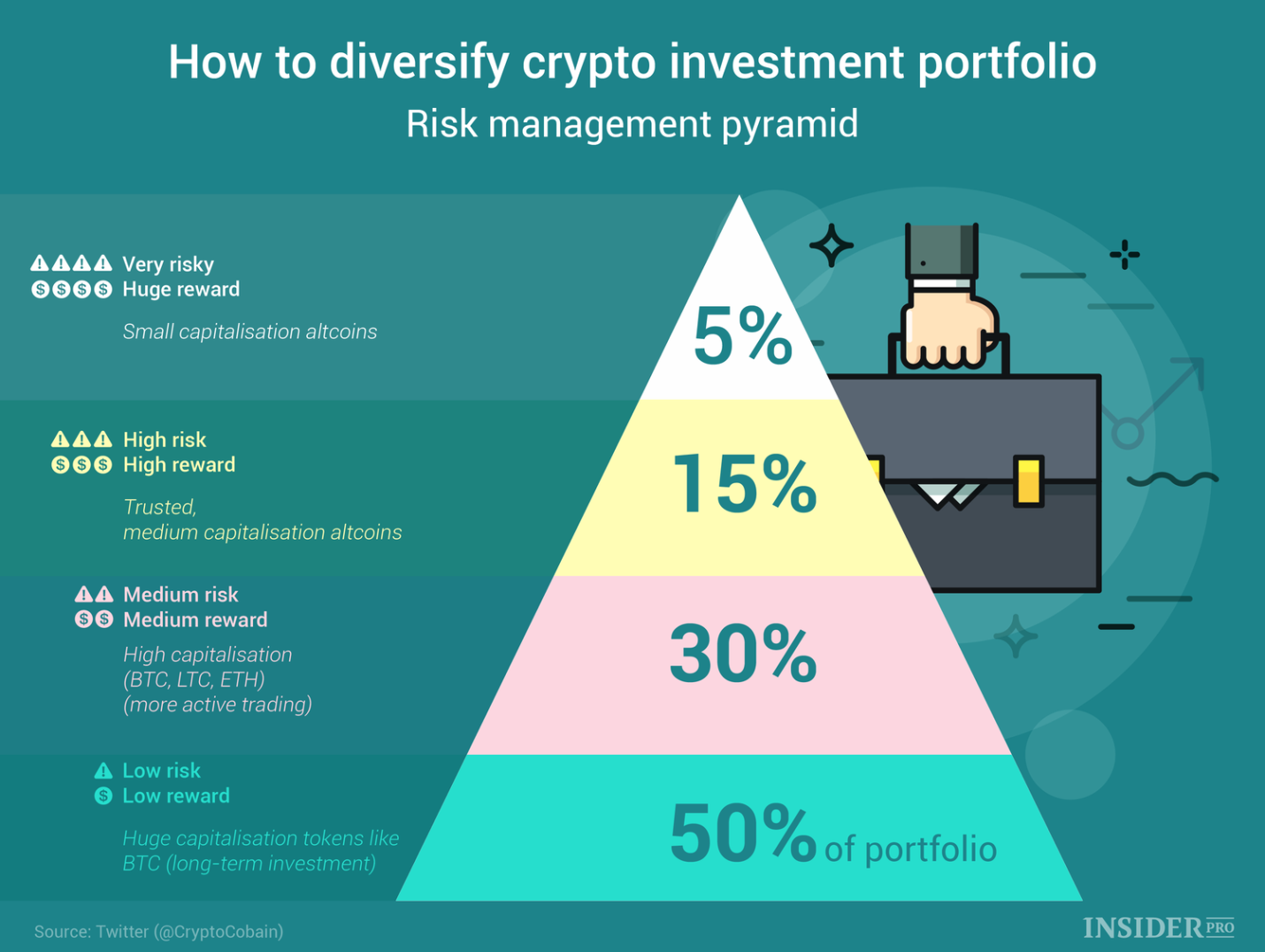
As digital assets continue to reshape the financial landscape, investors are faced with the challenge of balancing risk and reward across their portfolios. Strategic asset allocation emerges as a key principle in navigating this volatile market, offering a framework to diversify investments and optimize returns while managing exposure to inherent risks.
This approach not only safeguards against the inherent volatility of individual investments but also enhances the potential for long-term growth.
Whether you’re planning for retirement, saving for a major purchase, or simply aiming to grow your wealth, a well-balanced portfolio offers a sturdy foundation for achieving your objectives. But how do you figure out the right mix for you? Let’s break it down!
Recommended Read: Building a Crypto Legacy: Sustainable Strategies for Generational Wealth
What is Asset Allocation?
Asset allocation is the strategic distribution of investment capital across various asset classes to achieve a desired risk-return profile. In the context of cryptocurrency investment, asset allocation extends beyond individual coins or tokens to encompass diverse categories within the digital asset ecosystem.
Core Cryptocurrencies: Established digital assets such as Bitcoin (BTC) and Ethereum (ETH) serve as the foundation of many crypto portfolios. These blue-chip cryptocurrencies are renowned for their liquidity, security, and market dominance, making them attractive options for risk-averse investors seeking stability amidst market volatility.
Altcoins: Alternative cryptocurrencies, or altcoins, represent a diverse array of digital assets beyond Bitcoin and Ethereum. These include projects with unique use cases, innovative technologies, and potential for significant growth. While altcoins offer higher volatility and speculative appeal, they also introduce additional risks associated with project viability, liquidity, and market sentiment.
Decentralized Finance (DeFi): DeFi tokens represent a subset of cryptocurrencies focused on building decentralized financial infrastructure and applications. Investing in DeFi provides exposure to a burgeoning ecosystem of lending protocols, decentralized exchanges, and yield farming opportunities. However, the nascent nature of DeFi introduces risks such as smart contract vulnerabilities, regulatory uncertainty, and protocol governance.
Non-Fungible Tokens (NFTs): Non-fungible tokens are unique digital assets representing ownership of digital art, collectibles, virtual real estate, and more. NFTs have surged in popularity, offering opportunities for creators, collectors, and investors alike. However, the speculative nature of NFT markets and the lack of standardized valuation metrics pose challenges for investors seeking to incorporate NFTs into their portfolios.

Risk Factors in Cryptocurrencies
Volatility: Cryptocurrency prices are notoriously volatile, with prices often experiencing significant fluctuations within short periods. This volatility can result in rapid gains but also substantial losses for investors.
Regulatory Uncertainty: The regulatory environment surrounding cryptocurrencies is constantly evolving, with governments and regulatory bodies worldwide implementing varying degrees of oversight and enforcement. Regulatory changes can impact market sentiment and the legality of certain cryptocurrency activities, adding a layer of uncertainty for investors.
Security Risks: Cryptocurrency investments are susceptible to security risks such as hacking, fraud, and theft. Exchanges and wallets may be vulnerable to cyberattacks, potentially resulting in the loss of investors’ funds.
Market Liquidity: Liquidity can vary significantly across different cryptocurrencies, with some assets experiencing thin trading volumes and wide bid-ask spreads. Illiquid markets can exacerbate price volatility and hinder investors’ ability to execute trades at desired prices.
Strategies for Balancing Risk and Reward
Volatility Management
Cryptocurrency markets are known for their extreme volatility, with prices capable of experiencing significant fluctuations within short periods. Managing volatility risk involves implementing strategies such as:
Position Sizing: Allocating capital in proportion to the perceived risk of each cryptocurrency investment, with smaller positions in more volatile assets and larger positions in more stable ones.
Stop-Loss Orders: Setting predetermined price levels at which to sell assets to limit potential losses during market downturns.
Diversification
Diversifying investments across a range of cryptocurrencies can help mitigate specific asset risks and reduce portfolio volatility. By spreading investments across different projects, investors can minimize the impact of adverse events affecting any single asset.
Recommended Read: The Two Sides of the Coin: Risks and Rewards of Digital Investments
Thorough Research and Due Diligence
We recommend monitoring market trends, trading volumes, liquidity, and investor sentiment to gauge the overall market conditions. Follow the space to stay informed about regulatory developments and compliance requirements in different jurisdictions to mitigate regulatory risks.
Risk Management
Effective risk management is indispensable in the crypto space, where market fluctuations can be swift and unforgiving. Techniques such as position sizing, stop-loss orders, and portfolio rebalancing play a crucial role in managing risk exposure.
Position Sizing: Determining the allocation of capital to each asset based on its risk profile and correlation with the overall portfolio helps limit potential losses during downturns.
Stop-loss Orders: Setting predefined exit points for each investment guards against catastrophic losses by automatically selling assets if they experience significant declines.
Rebalancing: Regularly reassessing and adjusting portfolio allocations ensures alignment with investment objectives and market conditions. Rebalancing involves selling over-performing assets to maintain desired weightings and buying undervalued assets to capitalize on potential upside.
Long-Term Perspective
Taking a long-term view can help investors navigate short-term volatility and focus on the underlying fundamentals of their cryptocurrency investments. By:
Ignoring Short-Term Noise: Avoiding reactionary decisions based on short-term price movements and focusing on the long-term value proposition of each investment.
Staying Informed: Keeping abreast of developments in the cryptocurrency space, technological advancements, and industry trends to make informed decisions.

Approaches To Strategic Crypto Asset Allocation
Core-Satellite Approach
The core-satellite approach involves dividing the portfolio into core holdings and satellite investments.
Core holdings typically consist of established cryptocurrencies with strong fundamentals and widespread adoption, such as Bitcoin and Ethereum. These assets serve as the foundation of the portfolio, providing stability and long-term growth potential.
Satellite investments, on the other hand, are smaller allocations to high-risk, high-reward assets such as altcoins, DeFi tokens, and emerging projects. This approach allows investors to balance risk and reward by combining stable core assets with speculative satellite investments.
Equal Weighting
Equal weighting involves allocating an equal percentage of the portfolio to each cryptocurrency asset, regardless of market capitalization or perceived risk. This approach fosters diversification and prevents overexposure to any single asset or sector. By maintaining equal weights across assets, investors can mitigate concentration risk and capture potential upside from a diverse range of cryptocurrencies.
Market-Cap Weighting
Market-cap weighting involves allocating capital to cryptocurrencies based on their market capitalization, with larger allocations to assets with higher market caps and smaller allocations to assets with lower market caps.
This approach reflects the relative size and significance of each cryptocurrency within the market and may result in a portfolio skewed towards larger, more established assets like Bitcoin and Ethereum.
While market-cap weighting offers simplicity and liquidity, it may lead to overexposure to dominant assets and limited exposure to smaller, potentially high-growth cryptocurrencies.
Risk-Adjusted Allocation
Risk-adjusted allocation involves adjusting portfolio allocations based on the risk profile of each cryptocurrency asset. This approach considers factors such as volatility, liquidity, correlation with other assets, and fundamental metrics to determine optimal allocations.
Assets with higher volatility or lower liquidity may receive smaller allocations to mitigate risk, while assets with strong fundamentals and low correlation may receive larger allocations. By dynamically adjusting allocations based on risk considerations, investors can optimize risk-adjusted returns and enhance portfolio stability.
Sector Rotation
Sector rotation involves rotating portfolio allocations among different sectors within the cryptocurrency market based on market trends, technological developments, and regulatory dynamics. This approach seeks to capitalize on emerging trends and opportunities while reducing exposure to sectors facing headwinds or regulatory challenges.
Sector rotation may involve shifting allocations between sectors such as decentralized finance (DeFi), non-fungible tokens (NFTs), layer-1 protocols, and privacy-focused cryptocurrencies to adapt to changing market conditions and capitalize on sector-specific growth opportunities.
Strategic Crypto Asset Allocations
HODLing: The Fortress of Long-Term Investment
HODLing, derived from a misspelling of “hold,” epitomizes a steadfast commitment to long-term investment in the cryptocurrency realm. HODLers are akin to guardians, weathering the storms of market volatility with unwavering conviction. This strategy involves holding onto assets for an extended period, often years, based on the belief in their fundamental strength and future appreciation.
Bitcoin and Ethereum are typically favored as core holdings due to their established track record, widespread adoption, and status as digital gold and silver, respectively. Allocating 40% of the portfolio to HODLing reflects a belief in the enduring value and potential growth of these foundational assets.
Dollar-Cost Averaging (DCA): Mitigating Volatility Through Regular Investment
Dollar-Cost Averaging (DCA) offers a methodical approach to mitigating the risk of market volatility. Instead of investing a lump sum at once, DCA involves regularly purchasing a fixed dollar amount of a particular cryptocurrency, irrespective of its price.
Over time, this strategy reduces the average cost per coin, leveraging market fluctuations as opportunities rather than threats. For a more cautious approach, approximately 20% of the portfolio may be allocated to DCA, providing stability and consistency in the face of market uncertainty.
Swing Trading: Balancing Patience and Agility for Medium-Term Gains
Swing trading involves capitalizing on short- to medium-term price swings in the market. Traders identify trends and patterns in price movements and aim to profit from buying low and selling high within a relatively short timeframe, typically spanning several days to weeks.
This strategy requires a keen understanding of technical analysis and market dynamics to identify entry and exit points. With a 30% allocation, swing trading allows investors to capitalize on market momentum while maintaining a more flexible approach compared to long-term HODLing.
Day Trading: Seizing Opportunities in High-Stakes Market Dynamics
Day trading is a high-paced strategy where traders execute buy and sell orders within the same trading day. It requires quick decision-making, technical expertise, and a high tolerance for risk, as profits are sought from rapid price fluctuations.
Day traders often leverage margin and employ advanced trading techniques to capitalize on short-term market movements. Given its inherently higher risk and intense nature, day trading occupies a smaller allocation of 10% within the portfolio, reserved for experienced traders who can navigate the fast-paced environment effectively.
Learn More: The Rise of Blockchain Asset Investments: Opportunities, Risks, and Market Outlook

Discover the latest trends and insights in the digital asset world. Our specialists keep you updated and educated about the evolving market of investing in cryptocurrencies and altcoin investment options . Join our community now and stay ahead! Call 1.800.970.2506 to register.














